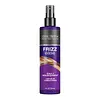What's inside
What's inside
 Key Ingredients
Key Ingredients

No key ingredients
 Benefits
Benefits

 Concerns
Concerns

 Ingredients Side-by-side
Ingredients Side-by-side

Water
Skin ConditioningDimethicone
EmollientCetearyl Alcohol
EmollientPhenoxyethanol
PreservativeSimmondsia Chinensis Seed Oil
EmollientCarthamus Tinctorius Seed Oil
MaskingCrambe Abyssinica Seed Oil Phytosterol Esters
EmulsifyingCocos Nucifera Oil
MaskingChlorella Vulgaris Extract
Skin ConditioningHydrolyzed Algin
Arginine Hcl
Skin ConditioningRosa Canina Fruit Oil
EmollientSea Water
HumectantLaurdimonium Hydroxypropyl Hydrolyzed Keratin
Skin ConditioningPhosphatidylcholine
EmulsifyingBehentrimonium Chloride
PreservativeGlyceryl Stearate Se
EmulsifyingPolyquaternium-37
Dicaprylyl Carbonate
EmollientIsopropyl Alcohol
SolventSodium Gluconate
Skin ConditioningGlyceryl Laurate
EmollientLauryl Glucoside
CleansingSodium Benzoate
MaskingPotassium Sorbate
PreservativeCitric Acid
BufferingLinalool
PerfumingLimonene
PerfumingParfum
MaskingWater, Dimethicone, Cetearyl Alcohol, Phenoxyethanol, Simmondsia Chinensis Seed Oil, Carthamus Tinctorius Seed Oil, Crambe Abyssinica Seed Oil Phytosterol Esters, Cocos Nucifera Oil, Chlorella Vulgaris Extract, Hydrolyzed Algin, Arginine Hcl, Rosa Canina Fruit Oil, Sea Water, Laurdimonium Hydroxypropyl Hydrolyzed Keratin, Phosphatidylcholine, Behentrimonium Chloride, Glyceryl Stearate Se, Polyquaternium-37, Dicaprylyl Carbonate, Isopropyl Alcohol, Sodium Gluconate, Glyceryl Laurate, Lauryl Glucoside, Sodium Benzoate, Potassium Sorbate, Citric Acid, Linalool, Limonene, Parfum
Water
Skin ConditioningGlycerin
HumectantAmodimethicone
Panthenol
Skin ConditioningBisamino PEG/PPG-41/3 Aminoethyl Pg-Propyl Dimethicone
Vp/Dimethylaminoethylmethacrylate Copolymer
Trideceth-12
EmulsifyingDimethicone PEG-8 Meadowfoamate
EmollientDiazolidinyl Urea
PreservativeParfum
MaskingPolyquaternium-59
UV AbsorberCocodimonium Hydroxypropyl Hydrolyzed Wheat Protein
CleansingCitric Acid
BufferingButylene Glycol
HumectantHydrolyzed Vegetable Protein Pg-Propyl Silanetriol
Skin ConditioningSodium Chloride
MaskingCetrimonium Chloride
AntimicrobialPropylene Glycol
HumectantWheat Amino Acids
Skin ConditioningTocopheryl Acetate
AntioxidantCamellia Sinensis Leaf Extract
AntimicrobialChelidonium Majus Extract
Rosa Canina Fruit Extract
AstringentOlive Oil PEG-7 Esters
EmollientAscorbic Acid
AntioxidantRetinyl Palmitate
Skin ConditioningMethylparaben
PreservativePropylparaben
PreservativeAloe Barbadensis Leaf Extract
EmollientWater, Glycerin, Amodimethicone, Panthenol, Bisamino PEG/PPG-41/3 Aminoethyl Pg-Propyl Dimethicone, Vp/Dimethylaminoethylmethacrylate Copolymer, Trideceth-12, Dimethicone PEG-8 Meadowfoamate, Diazolidinyl Urea, Parfum, Polyquaternium-59, Cocodimonium Hydroxypropyl Hydrolyzed Wheat Protein, Citric Acid, Butylene Glycol, Hydrolyzed Vegetable Protein Pg-Propyl Silanetriol, Sodium Chloride, Cetrimonium Chloride, Propylene Glycol, Wheat Amino Acids, Tocopheryl Acetate, Camellia Sinensis Leaf Extract, Chelidonium Majus Extract, Rosa Canina Fruit Extract, Olive Oil PEG-7 Esters, Ascorbic Acid, Retinyl Palmitate, Methylparaben, Propylparaben, Aloe Barbadensis Leaf Extract
Ingredients Explained
These ingredients are found in both products.
Ingredients higher up in an ingredient list are typically present in a larger amount.
Citric Acid is an alpha hydroxy acid (AHA) naturally found in citrus fruits like oranges, lemons, and limes.
Like other AHAs, citric acid can exfoliate skin by breaking down the bonds that hold dead skin cells together. This helps reveal smoother and brighter skin underneath.
However, this exfoliating effect only happens at high concentrations (20%) which can be hard to find in cosmetic products.
Due to this, citric acid is usually included in small amounts as a pH adjuster. This helps keep products slightly more acidic and compatible with skin's natural pH.
In skincare formulas, citric acid can:
While it can provide some skin benefits, research shows lactic acid and glycolic acid are generally more effective and less irritating exfoliants.
Most citric acid used in skincare today is made by fermenting sugars (usually from molasses). This synthetic version is identical to the natural citrus form but easier to stabilize and use in formulations.
Read more about some other popular AHA's here:
Learn more about Citric AcidParfum is a catch-all term for an ingredient or more that is used to give a scent to products.
Also called "fragrance", this ingredient can be a blend of hundreds of chemicals or plant oils. This means every product with "fragrance" or "parfum" in the ingredients list is a different mixture.
For instance, Habanolide is a proprietary trade name for a specific aroma chemical. When used as a fragrance ingredient in cosmetics, most aroma chemicals fall under the broad labeling category of “FRAGRANCE” or “PARFUM” according to EU and US regulations.
The term 'parfum' or 'fragrance' is not regulated in many countries. In many cases, it is up to the brand to define this term.
For instance, many brands choose to label themselves as "fragrance-free" because they are not using synthetic fragrances. However, their products may still contain ingredients such as essential oils that are considered a fragrance by INCI standards.
One example is Calendula flower extract. Calendula is an essential oil that still imparts a scent or 'fragrance'.
Depending on the blend, the ingredients in the mixture can cause allergies and sensitivities on the skin. Some ingredients that are known EU allergens include linalool and citronellol.
Parfum can also be used to mask or cover an unpleasant scent.
The bottom line is: not all fragrances/parfum/ingredients are created equally. If you are worried about fragrances, we recommend taking a closer look at an ingredient. And of course, we always recommend speaking with a professional.
Learn more about ParfumWater. It's the most common cosmetic ingredient of all. You'll usually see it at the top of ingredient lists, meaning that it makes up the largest part of the product.
So why is it so popular? Water most often acts as a solvent - this means that it helps dissolve other ingredients into the formulation.
You'll also recognize water as that liquid we all need to stay alive. If you see this, drink a glass of water. Stay hydrated!
Learn more about Water